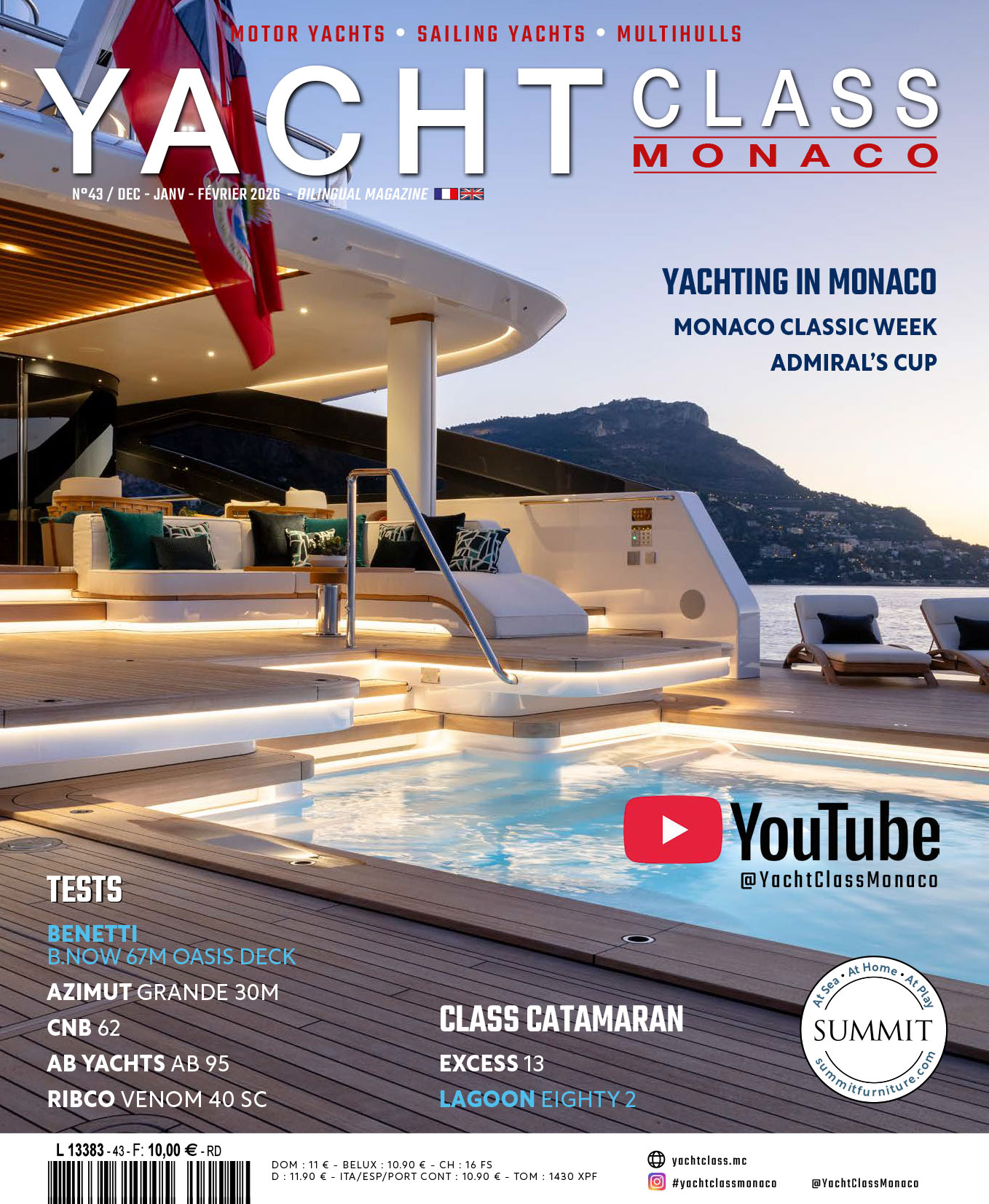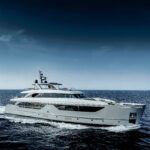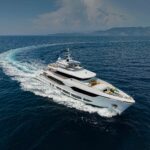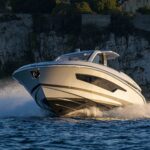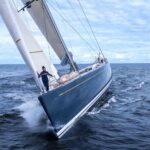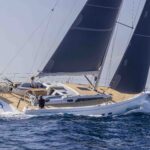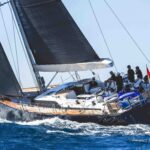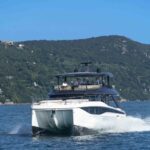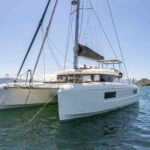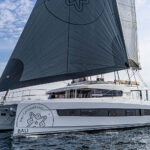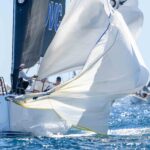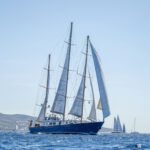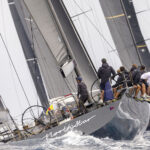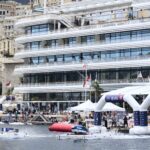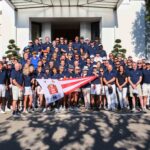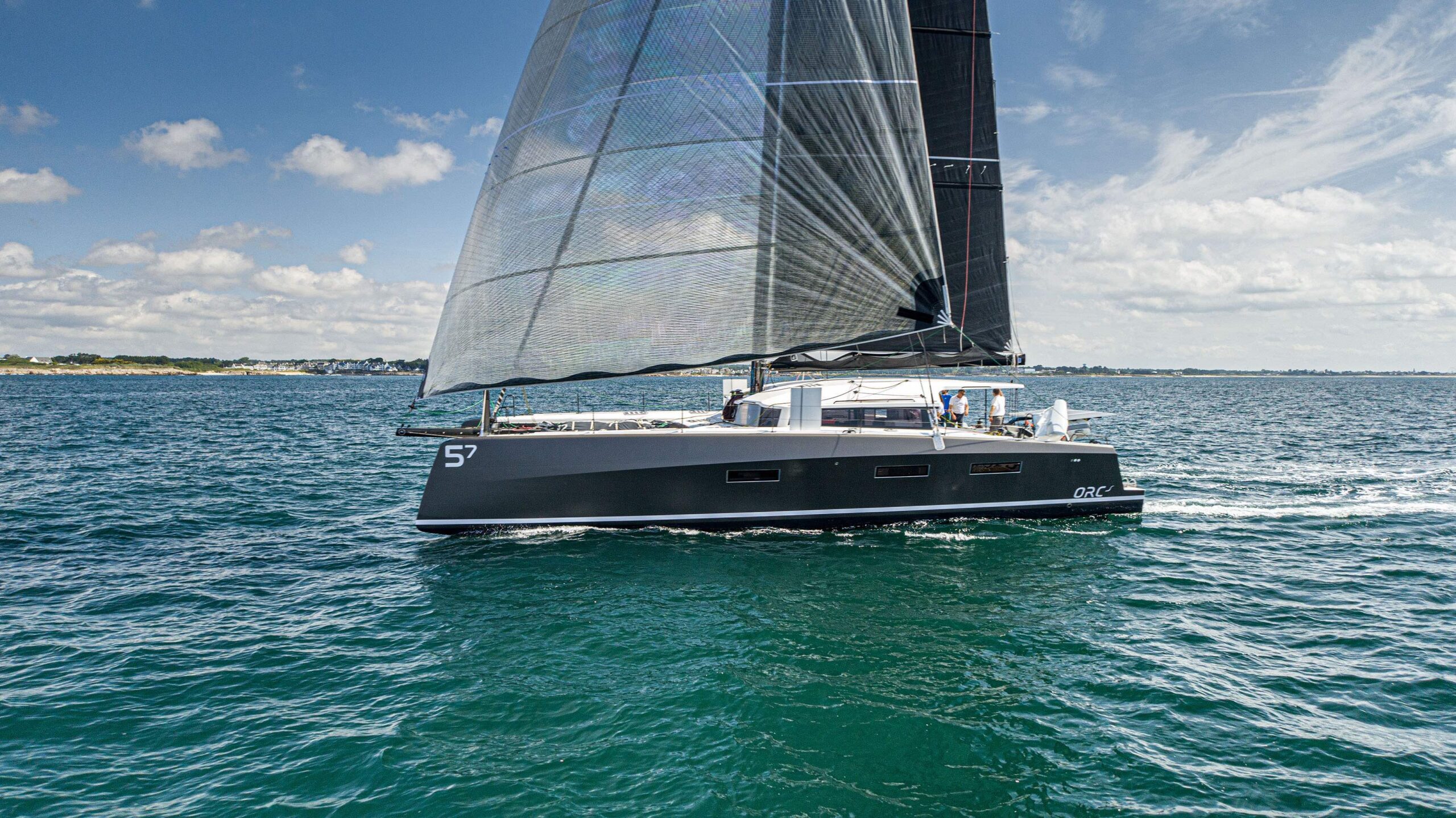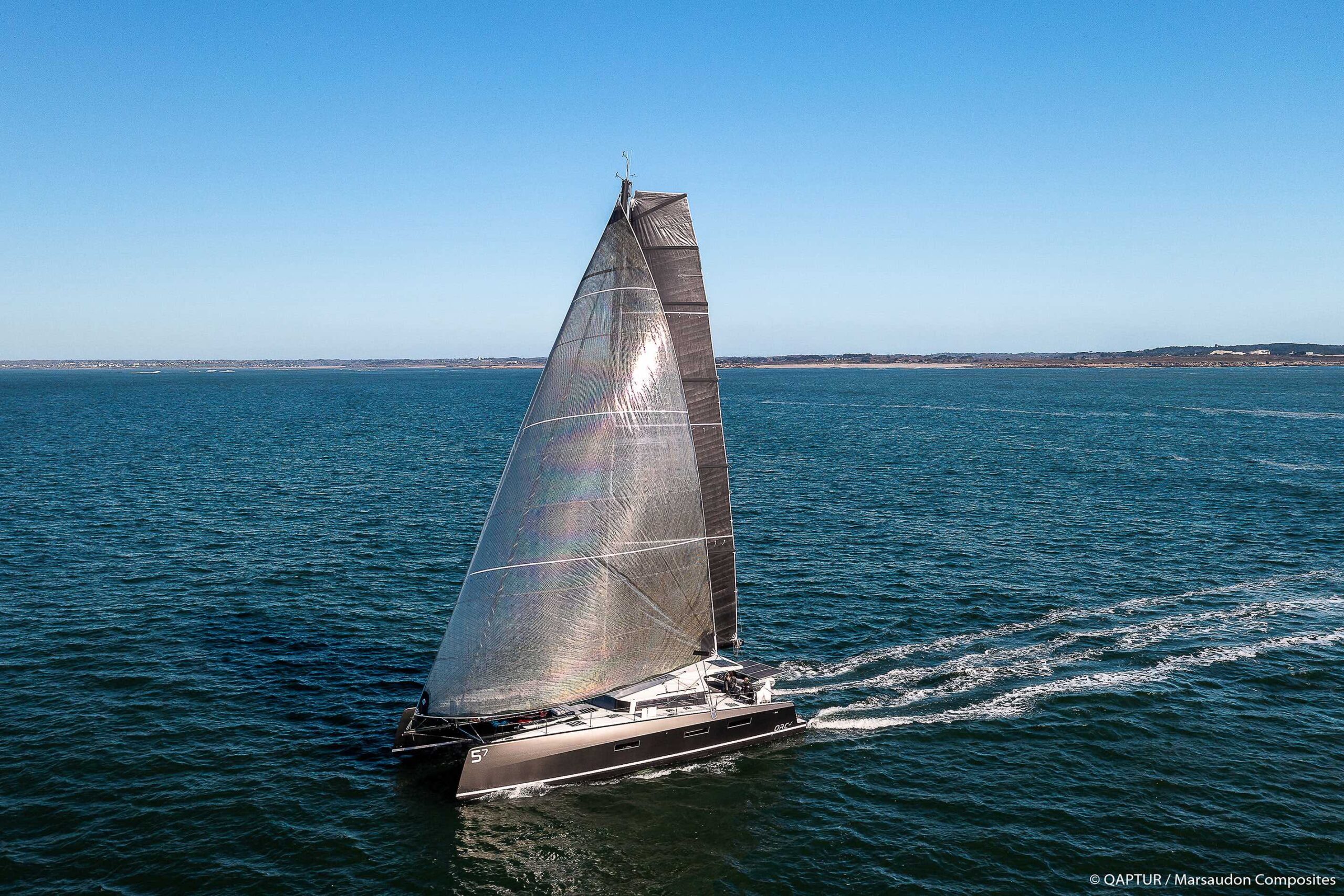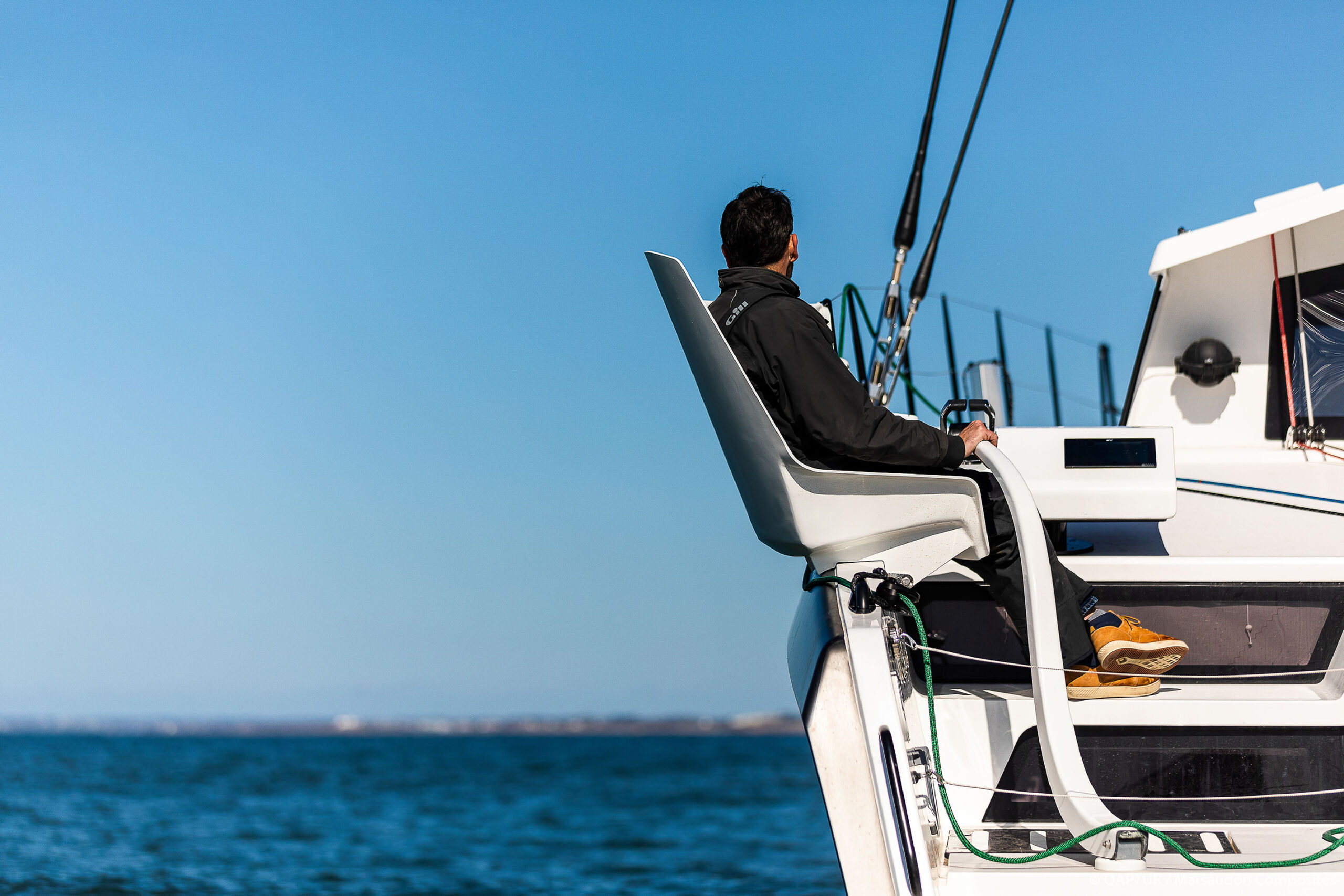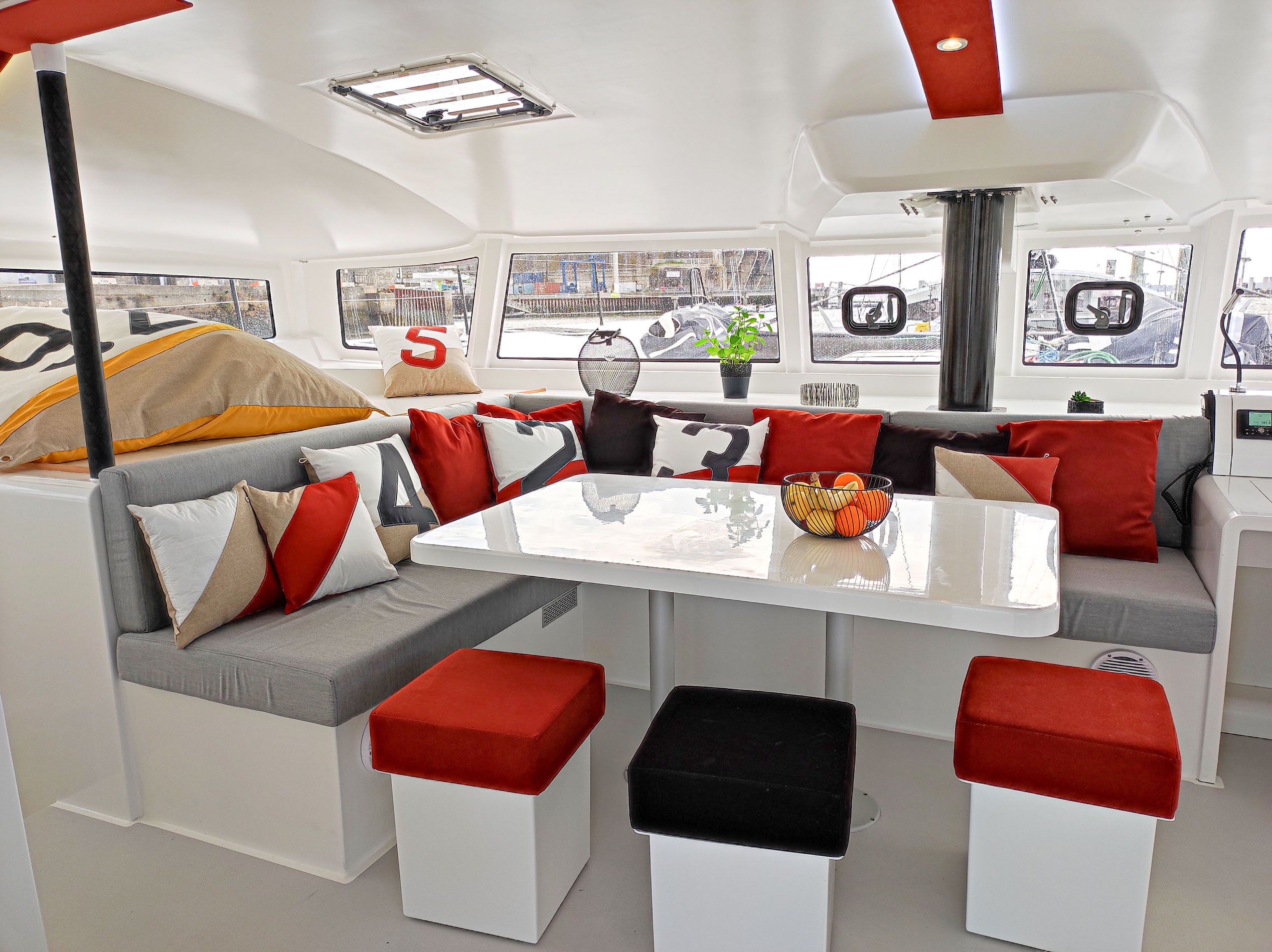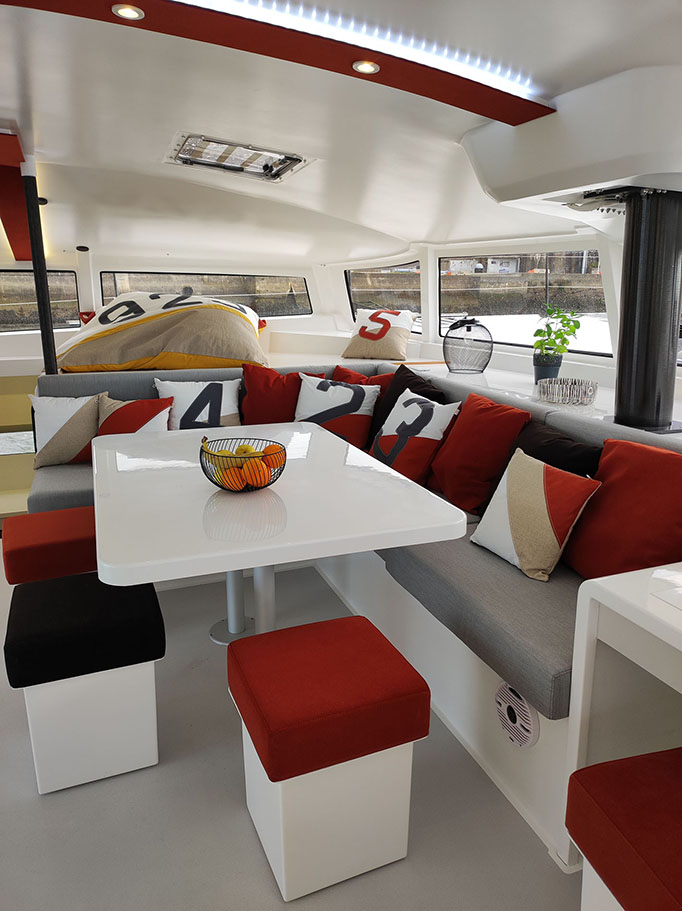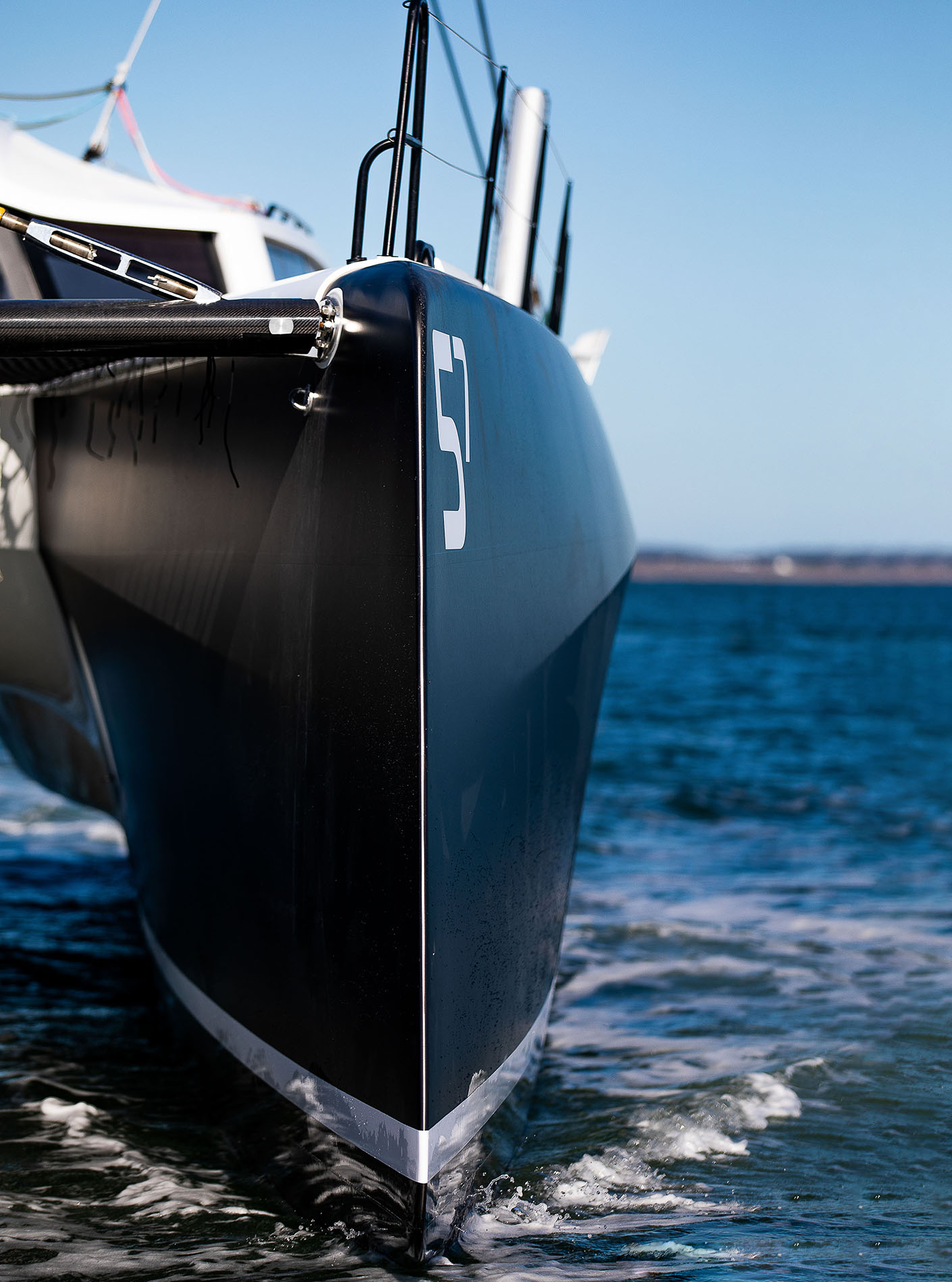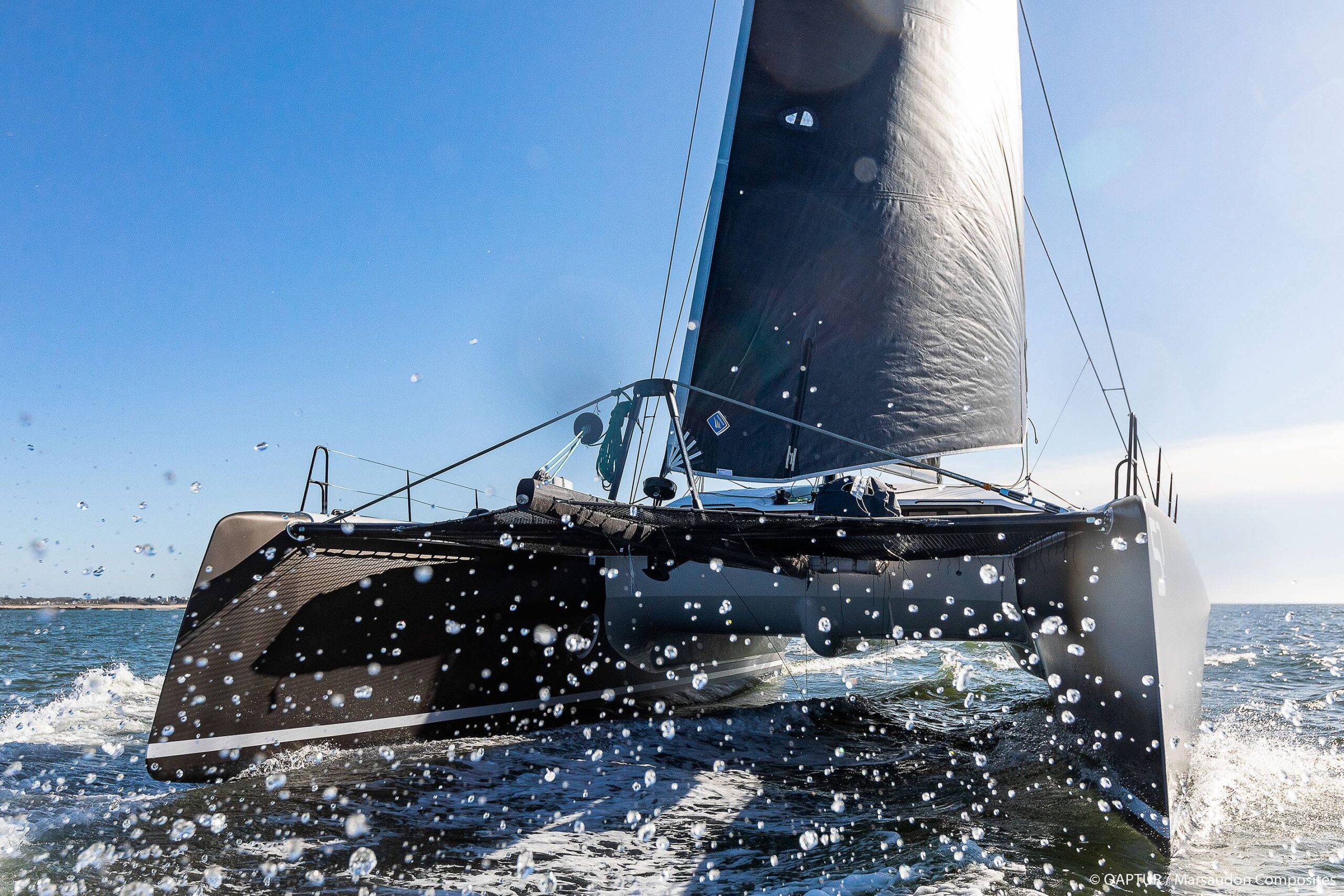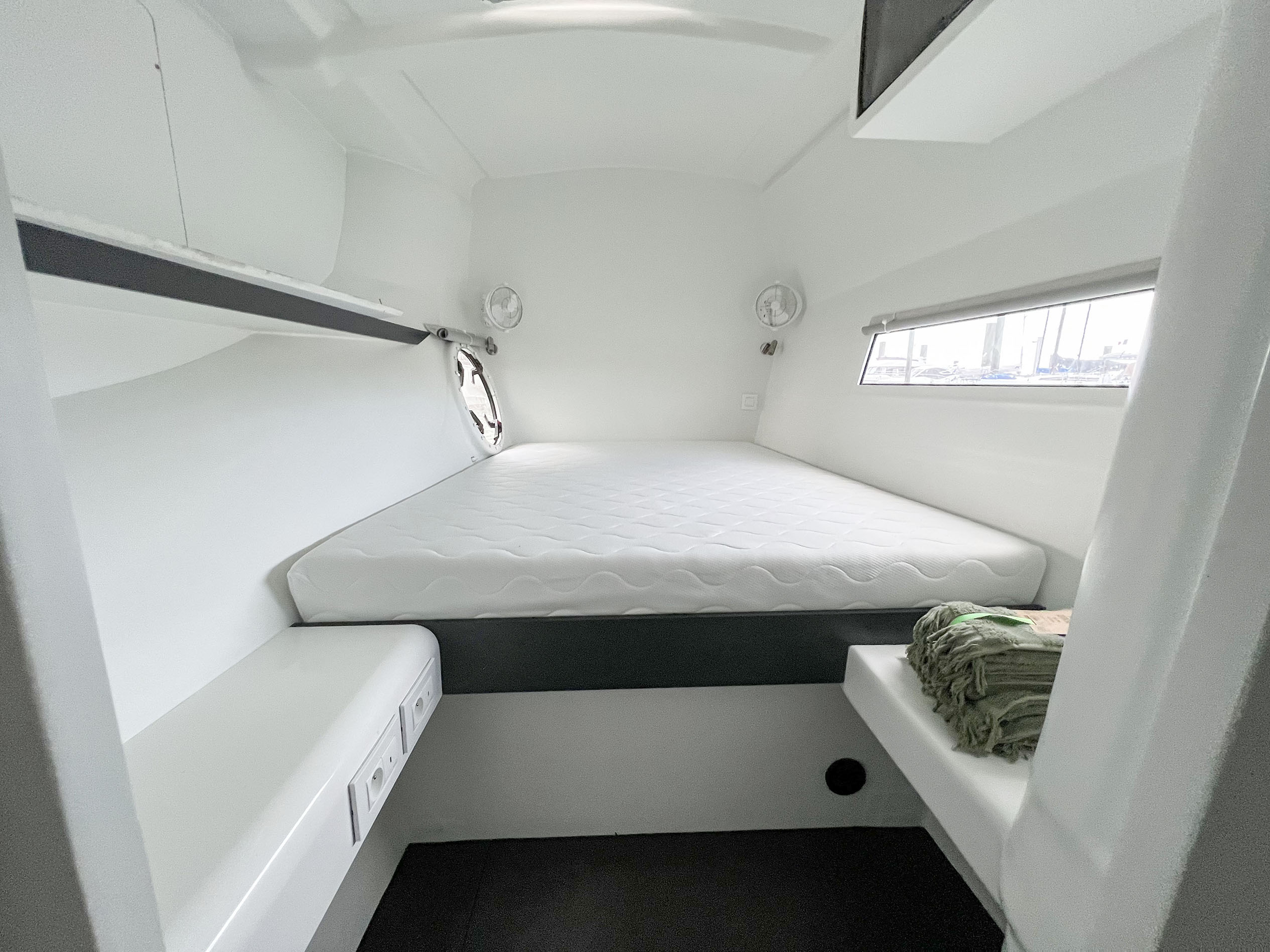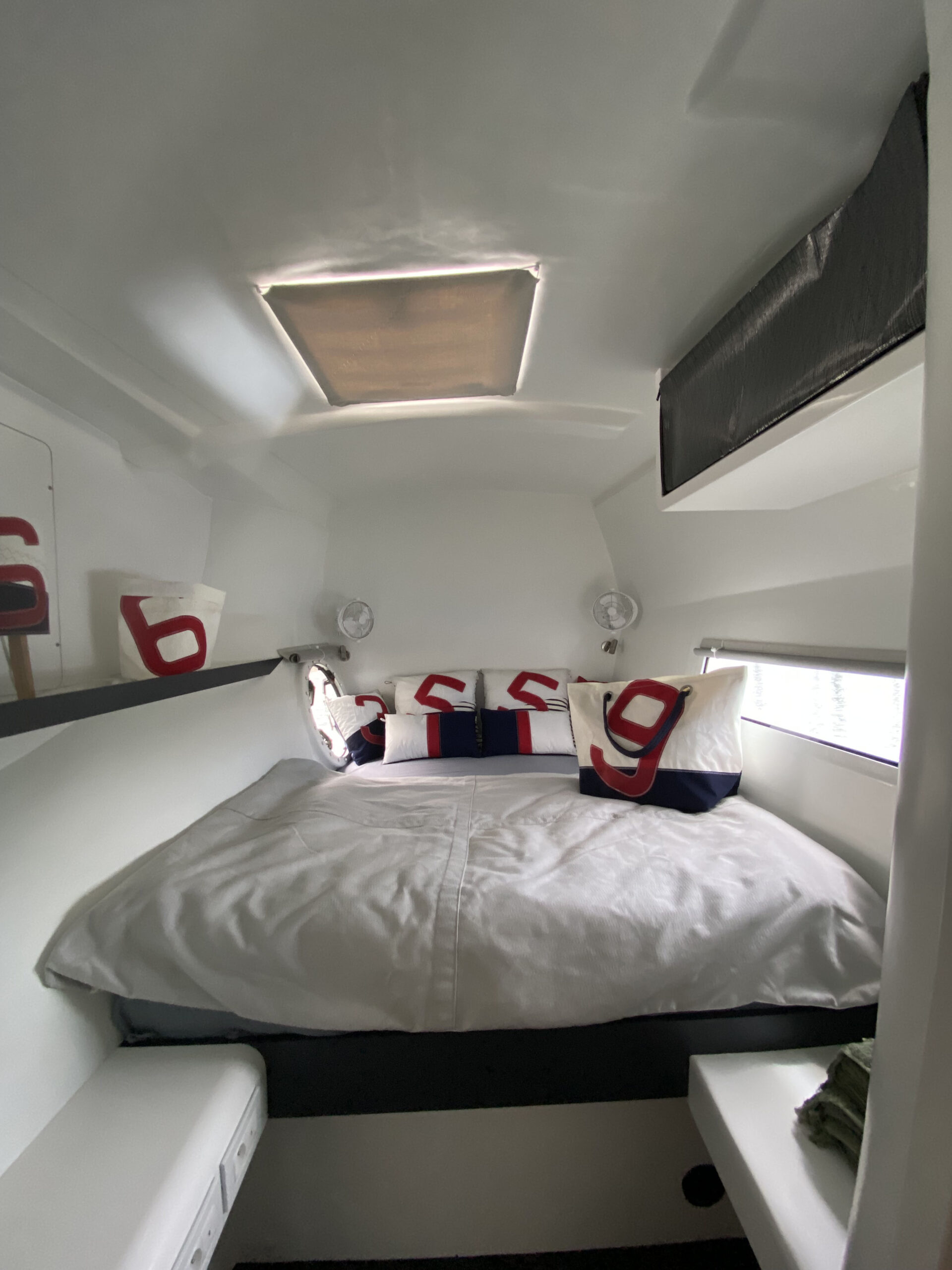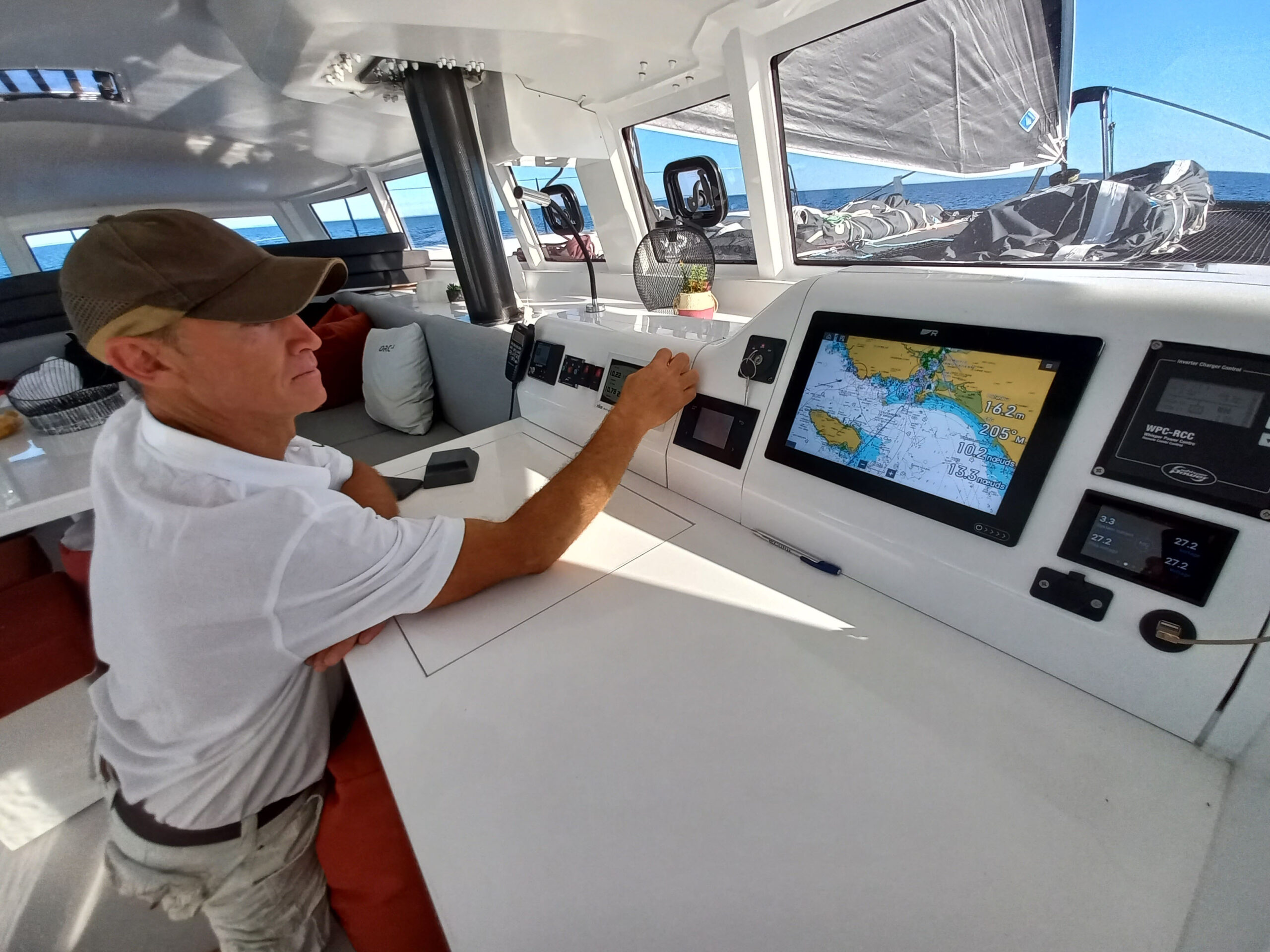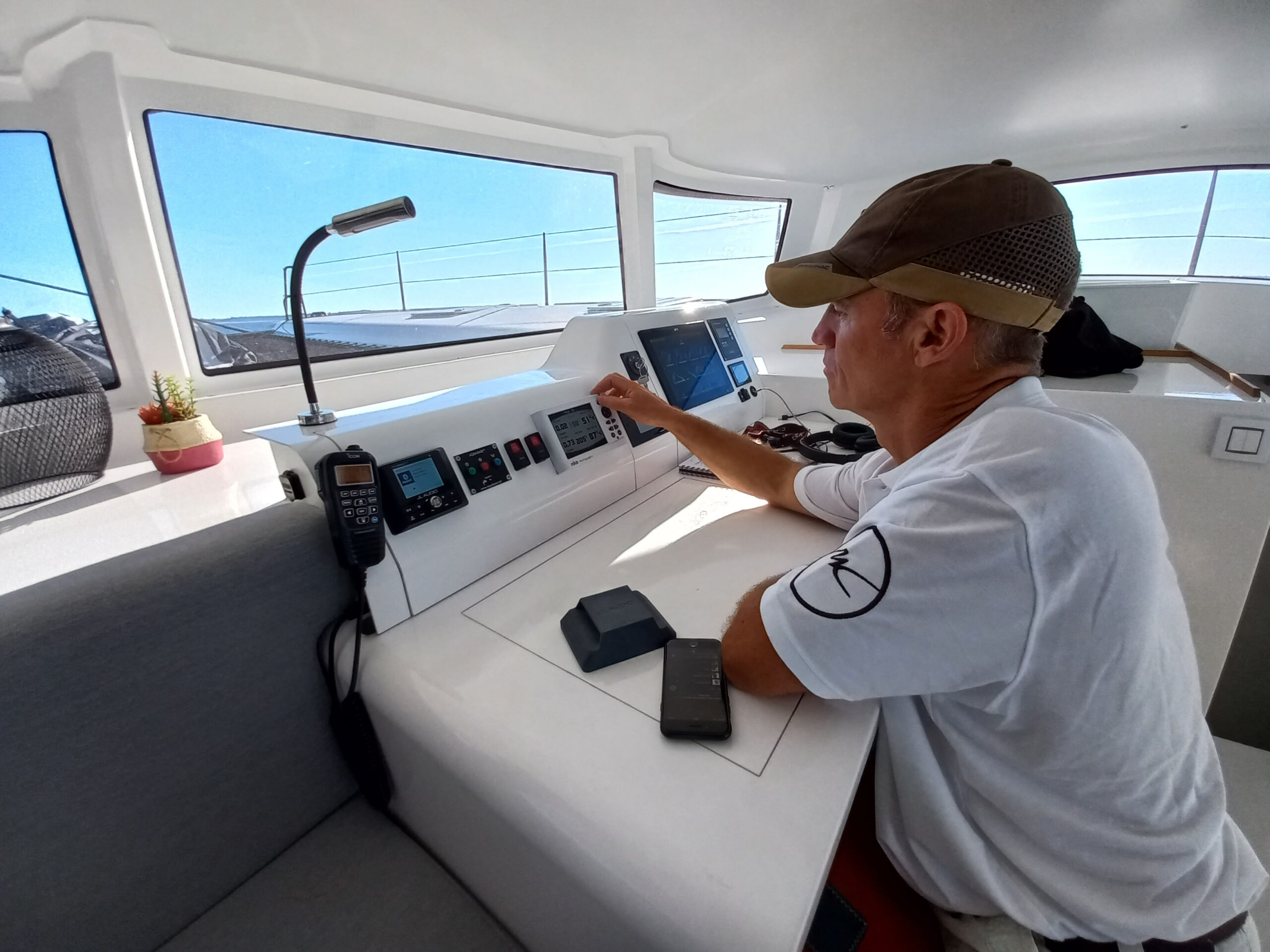Presentation
Yacht Class N°33 (june-july-august 2023)
MARSAUDON COMPOSITES
With its Ocean Rider Catamaran range, the French shipyard Marsaudon Composites is entering the fast-cruising niche. Aboard the ORC 57, the flagship designed by Marc Lombard, a crossing from the continent to Corsica gave us the opportunity to appreciate the performance and comfort of this refined and racy catamaran. Let’s head for Calvi!
Written by: Christophe Varène – Photos: DR
Fast. Very fast. With tonic wind conditions, between 20 and 40 true knots, quite favourable, north-west turning south-west, the speedometer delighted us with a maximum of 22,1 knots! And the last two hours, between 110 and 90 degrees of apparent wind, were spent at an average of almost 15 knots. With three people on board, the crossing between the port of Hyères and the bay of Calvi, in Corsica, on board the ORC 57 undeniably demonstrated the performance of this catamaran designed by Marc Lombard for speed. A look back at a great experience. From the Highfield tender that took us on board, we were able to appreciate the taut lines of the ORC 57 with its “racing” profile: inverted bows, very fine hulls, limited freeboard, discreet superstructures, low boom. Once on board, the sporty character becomes clear. Modern sailboats with tiller are rare. This brings back a pleasure that has been somewhat forgotten with the steering wheel: the thrill of direct control of the boat, especially in heavy seas from behind. And the position of the bucket seat – on the bulwark, almost on the outside – gives the helmsman an excellent view right up to the bow of the windward hull. Port manoeuvres may take some getting used to, but the precision is there. The Special Weather Bulletins warning of fresh and moderate gales encouraged Jean-Marc, the skipper of ORC 57, to be cautious and the sails were limited to the mainsail with 3 reefs and the J2, as recommended by the sail reduction chart issued by the architect. As the rigging was inspired by the world of ocean racing, the various operations took place with one crewmember at the helm and two at the mast step. Repeating these operations – releasing the third reef, then the second, replacing the J2 with the J1, and the J2 again – made them easier to understand and perform. There was no opportunity to sail upwind, but with the reclined daggerboards angled outwards to create the elevation, the skipper is confident of achieving up to 32-35 degrees of apparent wind.
PERFORMANCE AND WELL-BEING ON BOARD
Thanks to the expert advice of racers like Francis Joyon, whose trimaran IDEC comes from the same workshops, the deck plan ergonomics have also been worked on and offers a free passage from one hull to the other between the two steering positions, direct access to the winches and, in particular, to those for the mainsheet and its track, safety elements that should not be neglected. So, while the helmsman remained focused on playing with the waves and accelerating, let’s consider the crew’s comfort. Remember, the ORC 57 is a cruising catamaran and speed is not incompatible with a relaxing life on board. Stability is obviously an important asset, as is continuity of circulation between cockpit and saloon. This welcoming area is furnished with sofas and a large table. It leads to the interior through a large sliding door that disappears almost completely at the sides. Everywhere, simplicity is the key word. Indeed, the shipyard’s conscious decision to save weight meant that the construction had to be efficient. Made of vinylester foam sandwich, the boat receives its structures (some of which can be in carbon) directly in its hull moulds, which guarantees the rigidity of the entire structure. In fact, there is never any sensation of independent movement of the hulls, even in heavy seas. This process also ensures that there is no creaking or rattling. As for the design, the absence of a hull lining is a response to the desire to preserve the straightforward sporting spirit: the effect is rather successful, with clear and contemporary interiors. The custom production of about 8 to 10 boats per year allows owners to have all their wishes fulfilled… without compromising the shipyard’s quest for performance.
SIMPLE AND CUSTOMISABLE LAYOUTS
The very bright saloon houses a well-designed galley, even if, as already mentioned, stability under sail guarantees a certain level of comfort for the chef. There is a nice table for six to eight, a long U-shaped settee and stools that double up as storage – take care not to overload them so that they can be moved easily. A nice chart table is located forward, facing the navigation. Two side companionways lead to the cabins. In this configuration, the port hull is dedicated to the owner with an aft double berth, a desk and storage amidships and a shower stall forward. The other hull accommodates two guest cabins sharing a head and an independent shower cabin amidships. The layout seems minimalist – always in the spirit of sport – but not without a few clever ideas, such as the simple roll-up canvas concealing the portholes. As each model is unique, owners can add their own touch and some details can be improved. Beyond the pleasure of speed – the best way to expand one’s playground and discover distant landscapes – the ORC 57 adds an “art de vivre” dimension where the quest for the essential captures the spirit of the times.
Jérôme Cottet – sales manager at Marsaudon Composites “To support the client in their needs and programme.“
“Founded in 1999, Marsaudon Composites will celebrate its 25th anniversary next year. Initially specializing in the production of composite parts, then in hulls for ocean racing yachts, such as Francis Joyon’s trimaran IDEC that has an impressive track record, we launched in 2015 the TS range (for “Très Simple”, very simple in French), renamed ORC (for Ocean Rider Catamaran). And we are about to launch our fiftieth unit (25 ORC 42, 22 ORC 50 & 3 ORC 57). At the same time, we continue to work on custom yachts and are developing an activity for the aeronautical industry. Located in the Lorient submarine base, our industrial facilities include carrier decks and the largest oven in France for carbon parts. Developed by Sam Marsaudon (who is still technical advisor), then taken over by Damien Cailliau in 2018, the shipyard wanted to move upmarket and adapt as closely as possible to customer expectations by drafting, over a period of two or three months and prior to of construction, a document called Technical Requirements Specification, which is transmitted to the Design department. During the nine months it takes to build an ORC 57, the owner can take advantage of the services of our academy to complete his training. This can be technical or nautical. Our aim is to be at their side during this fantastic period of life that will be sailing on an ORC”.
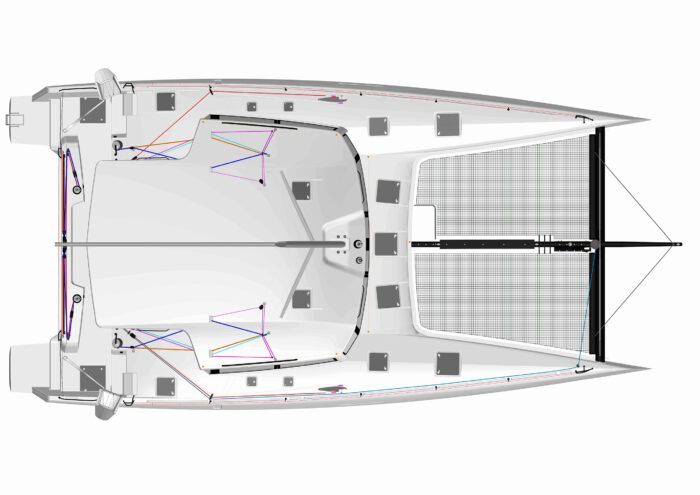
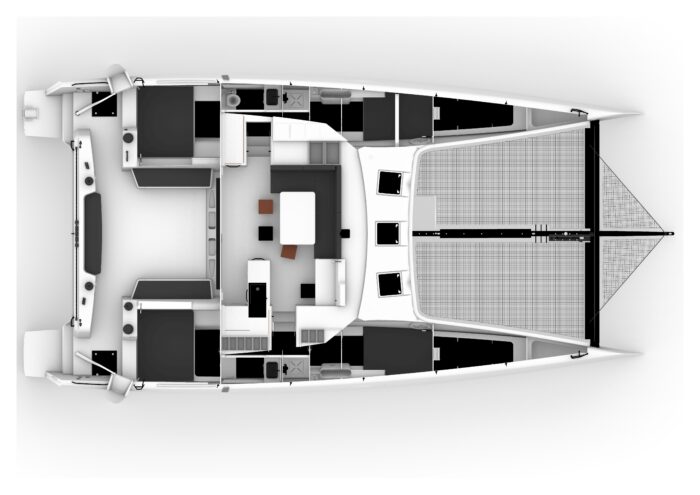
Technical sheet
